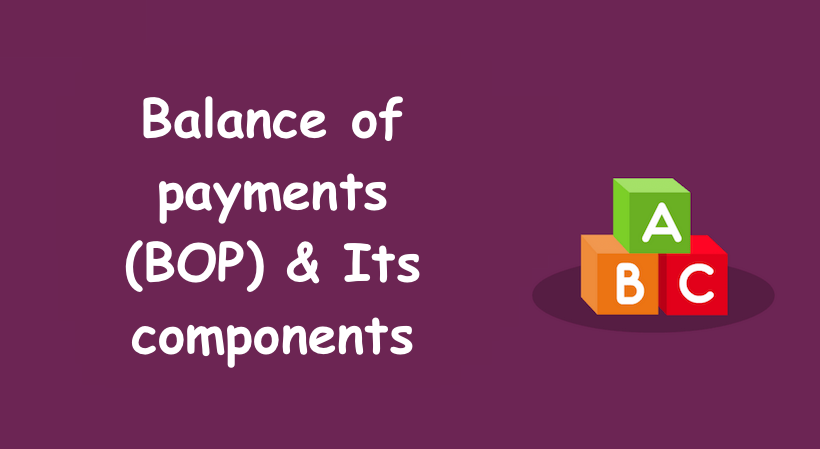Balance of payments (BOP) & Its components. The term “balance of payments” includes all payments and obligations made to outside countries against all payments and obligations received from outside countries. It’s a record of all financial flows in and out of a country from the rest of the world.
Recommended Articles
Example :
The calculation of balance of payments doesn’t has the task of merely subtracting out flows from inflows ,its scope is beyond that.
If all receipts and payments are considered, then the payments and receipts of each country are, and must be, equal. Any apparent inequality simply leaves one country acquiring assets in the others. For instance, if Indian residents buy electronic gadgets from China, and have no other transactions with China, then in such a situation Chinese must end up holding “Indian rupee “, which they may hold in the form of bank deposits in India or in the form of some other investment. The payments made by indians to China for electronic gadgets are balanced by the payments that are made by Chinese to Indian individuals and institutions, including banks, for the acquisition of assets in India in terms of rupees.
Advertisement
Must Read – Form 16 TDS
Deficit or surplus in Balance of payments :
Even though the totals of payments and receipts are necessarily equal, there will be inequalities like excesses of payments or excessive receipts, called deficits or surpluses in specific class of transactions. Thus, there can be a deficit or surplus in any of the following classes of transactions :
Trade of goods, services trade, foreign investment income, foreign aid such as from international monetary bodies like world bank ,IMF and Bricks bank for the purpose which an agreement has been made by BRICKS countries recently, private investment, the flow of gold and currency between central banks and treasuries, or any combination of these or other international transactions. A description that a country has a deficit or surplus in its “balance of payments” must be related to some specific class of transactions.
Components of Balance of payments:
Balance of payments comprises of following three sub accounts :
- current account,
- capital account and
- financial account, each of which have their own types of receipts and payments.
Must Read – Latest Income Tax Slab Rates
1. Current account :
Current account measures receipts and payments which are related to goods and services.They are popularly known as visible and invisible transactions .current account comprises the trade balance which is the difference between Trade receipts and payments of goods and also includes the balance for trade in services. When anyone refer to a balance of payments deficit they invariably mean a current account deficit.
2.Capital account :
capital account includes transfers of ownership of fixed assets, transfers of funds linked to, or conditional upon, acquisition or disposal of fixed assets; or cancellation, without any counter parts being received in return.
Must Read – TDS Rate Chart
3.Financial account :
Financial account consists of financial assets, such as gold, currency, derivatives, special drawing rights, equity and bonds. And the major aspects of financial account are direct investment, portfolio investment, other investment ,reserve assets.
Crisis in Balance of payments :
This occurs when the current account deficit can not be maintained. It means there will be a fall in foreign exchange reserves maintained by a nation and the country can no longer able to attract sufficient capital flows to finance the current account deficit.The solution to a balance of payments crisis is usually to devalue the currency and slow down consumer spending on imports, usually by causing an economic recession.
Must Read – PAN Name By PAN No

Please forward me about the effects of BOP in banking industry.
Thanks.